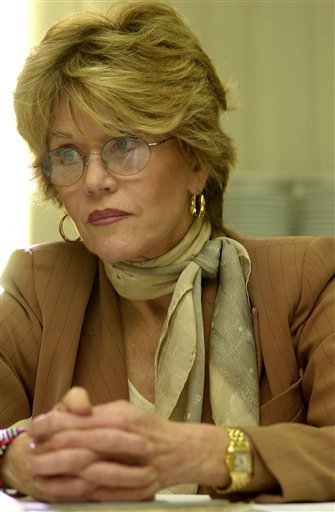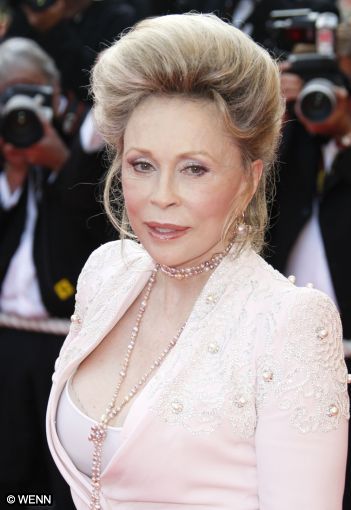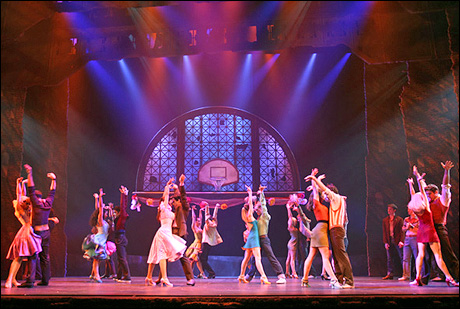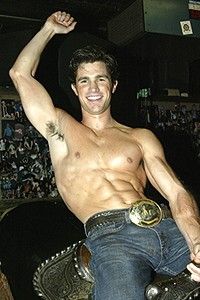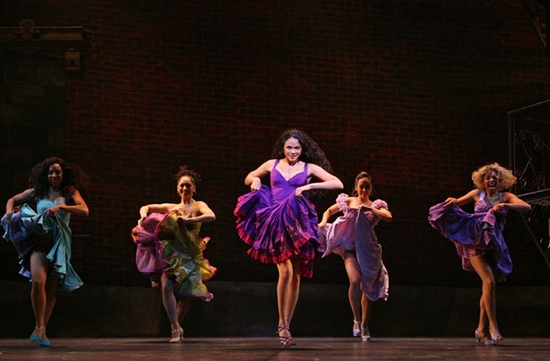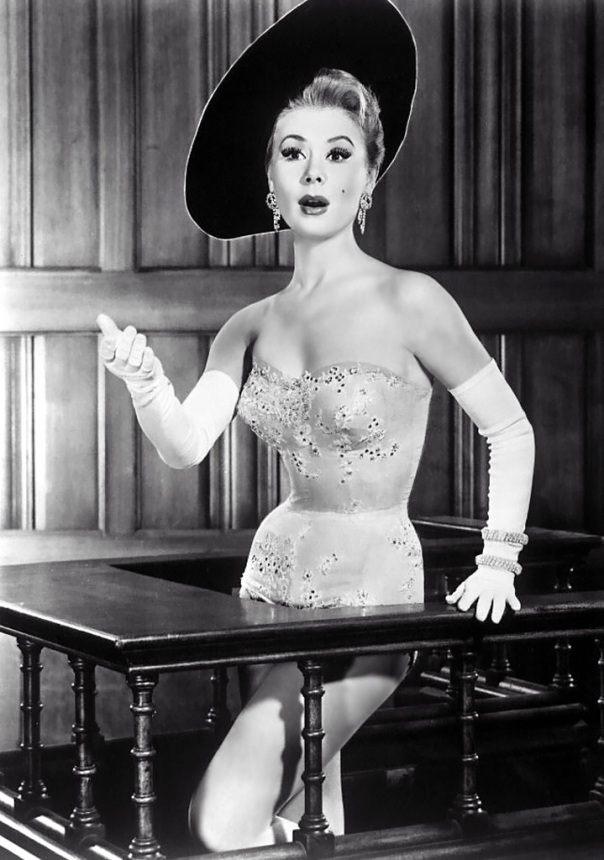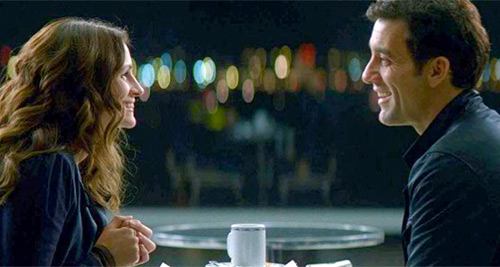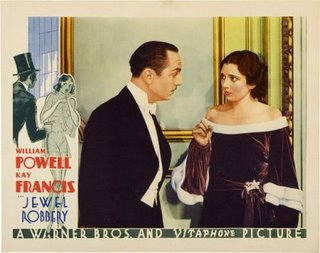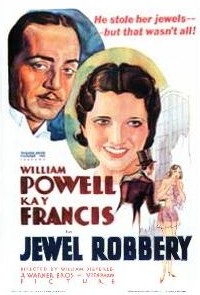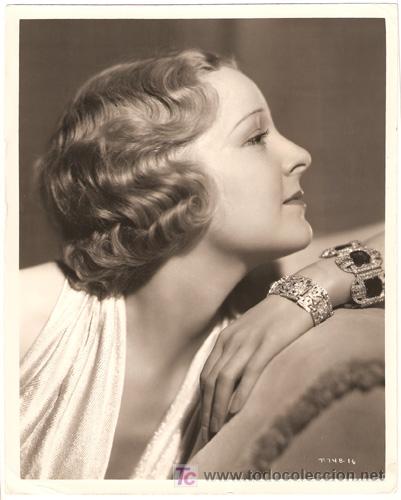
Ruth Chatterton as FRISCO JENNY
Either be sure to watch or set your TiVos, DVRs , etc., to Turner Classic Movies in the wee hours of March 24, as two pre-Code gems are being screened: FRISCO JENNY at 12:45 AM and MIDNIGHT MARY at 3:15 AM. Yes, the network is showing them at typically annoying time slots, as they do most of their more obscure, more interesting early talkie fare, while oft-seen classics like A PLACE IN THE SUN and FROM HERE TO ETERNITY – or even FREAKY FRIDAY and God help us, ROCKY – get the prime time spots. But, even if you miss them, you can buy the DVDs as part of TCM’s boxed set, FORBIDDEN HOLLYWOOD, VOLUME 3, which also includes HELL IS FOR HEROES, OTHER MEN’S WOMEN, WILD BOYS OF THE ROAD and THE PURCHASE PRICE.
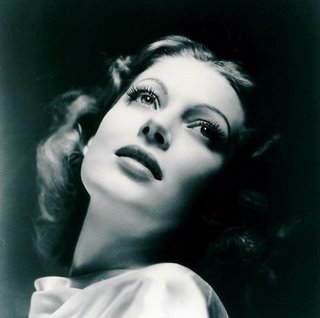
Loretta Young, the most excruciatingly pretty woman in cinema, photographed by George Hurrell, 1933

MIDNIGHT MARY, Franchot Tone and Loretta Young, gowned by Adrian
All of these films were directed by William Wellman, “Wild Bill,” that hard-boiled movie star-handsome man’s man of a director (WINGS, THE PUBLIC ENEMY, THE OX-BOW INCIDENT, STORY OF G.I. JOE), whose astonishing versatility also made him a fit helmer of women’s films in the early ’30s. MIDNIGHT MARY features Loretta Young at her most excruciatingly pretty as a slum girl who gets mixed up with gangsters, winds up in the clink, commits murder and becomes a tabloid headline. Scripted by Anita Loos, it’s a fast and furiously satisfying melodrama, more Warners than MGM, which spawned it. Una Merkel and Ricardo Cortez, always a slick baddie with the ladies, appear as the heroine’s amiably sleazy girlfriend and lover, respectively. This pre-Code era was by far the most interesting period of Young’s long career – in this, BORN TO BE BAD, A MAN’S CASTLE, TAXI and ZOO IN BUDAPEST, she was entrancingly natural, warm and sexy. At one point in MIDNIGHT MARY, Costumer Adrian, doubtlessly inspired by this penultimate clotheshorse, pours her into a seductive white fringe gown and cap, which, combined with some very fetching bangs, makes her irresistibly desirable. (Adrian errs only once, here, in his sometimes over-the-top fashion, with a maternity wear-looking coat with a silly ruffled collar and sillier matching hat that looks like a beached shell on Young’s head.) In Frank Capra’s PLATINUM BLONDE (1931), she even plays the prototype of Capra’s later, hard-boiled, wisecracking, take-it-on-the-chin newspaper gals perfected by Jean Arthur and Barbara Stanwyck, in contrast to a hilariously miscast Jean Harlow, as a snootily patrician heiress, the kind of role Young would soon find herself suffocatingtly typecast as, before going to play all manner of lacquered, sanctimonious, icky-sweet nuns, grandes dames, farmer’s daughters and bishop’s wives.

Loretta Young in ZOO IN BUDAPEST (1933)

Loretta: what the Hays Code hath wrought


Ruth Chatterton, on the set, gowned by Orry-Kelly
FRISCO JENNY (1932) stars Ruth Chatterton, the one ’30s star most in need of reappraisal, playing a Barbary Coast lass abused by her father, who is orphaned by the San Francisco earthquake (staged by Warners in less spectacular fashion than MGM’s take on that disaster 1936, but damned effective, withal) but survives to become the city’s most notorious brothel owner. In an echo of Chatterton’s greatest personal success, her 1929 Oscar-nominated MADAME X, she is – as she often was – given a heavy spate of mother love to bear. This time, it’s her illegitimate son (Donald Cook) who, ignorant of his true parentage, plays a District Attorney bent on cleaning up the town, and tries his own mother for murder (which she only committed to protect his career, of course). “Going over her career is like going over carrion – a stench in the nostrils of society!” he rants in court. Five screenwriters – including Wilson Mizner, the non-gay Mizner brother, who inspired Stephen Sondheim’s last musical, ROAD SHOW – worked on this breathlessly entertaining 71 minute epic (which includes cured ham Helen Jerome Eddy as the most unconvincing Chinese “Amah” in screen history, spouting unhelpful adages like “Fortunate is the mother of a man child”) and, through it all, Chatterton is, as always fixating. She’s a most capable madam, consulting her little black book for likely girls to promote at a smoker (“Big blonde,” “Bad drunk”) and holding genteel meetings with her employees that are more like high society afternoon tea receptions (“Business was very gratifying this month.”) In prison, strikingly sans makeup and facing the gallows, she weakens in terror, but regains herself, bitterly muttering, “The gods must all be out to lunch.” A melancholy arrangement of the song “My Gal Sal” serves as her touching theme throughout. After some initial on-set tension between her and Wellman, pissed off with this “woman’s picture” assignment, they grew to respect each other’s talent and this became her personal favorite film.

LILY TURNER
They followed this with LILY TURNER, a 65 minute sleazefest, which has Chatterton as a carny hooch dancer dealing with a passel of lousy, lousy men, beginning with a bigamist, then a pathetic alcoholic (Frank McHugh), and a psychotic strong man (Robert Barrat) and, finally, a happy ending with the ever boringly bland and reliable George Brent (Chatterton’s real life short-term husband). It was a smashing commercial success, much more so than FRISCO JENNY which was critically drubbed for its MADAME X steals and performed indifferently at the box office.

More than anything, it was Chatterton’s remarkable cello voice which made her a star in the shaky early days of sound when Hollywood desperately imported anyone from the stage who could string a sentence together sensibly, and every actress in town yearned to speak like her. But she also possessed a uniquely photogenic face – more fleshily cherubic than fine-boned, the type you see in Boucher and Greuze paintings, with a retrousse nose, pouty lips and huge, expressive eyes – a rather indifferent, straight-up-and-down body definitely leaning toward the matronly, on which clothes, nevertheless, hung superbly, and a serious acting talent honed from years on the stage. She was on Broadway at age 14 as a dancer, but it was her voice which Producer Gilbert Miller first noticed and she became a star in DADDY LONG LEGS in 1914, at age 21.

On Broadway in THE RAINBOW, 1912, aged 19
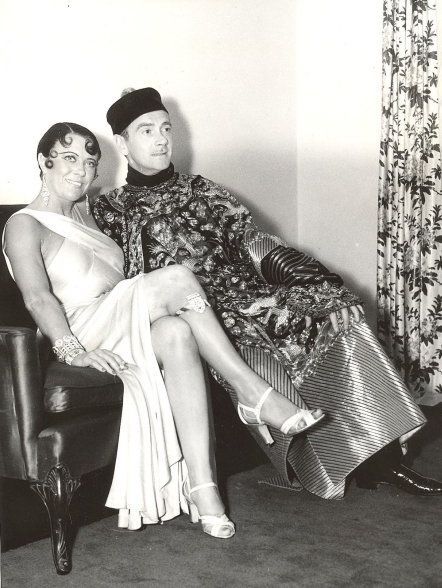
Costumed as Josephine Baker, with Clifton Webb as Fu Manchu, at Countess Dorothy DiFrasso’s “Come as Who You’d Like to Be” Party

The Death of Chatterton, by Henry Wallis
Chatterton, a descendant of the poet Thomas Chatterton, was born on Christmas Eve, 1893, in New York City, on 128th Street. She was married three times, first to blindingly handsome actor Ralph Forbes (1924 – 1932), who she left for her catnip-to-the-divas co-star in the film, THE RICH ARE ALWAYS WITH US, George Brent (1932 – 1934), and finally, actor Barry Thomson (1942 – until his death in 1960). Chatterton made her debut in films when she was 35 – and was, therefore, like Mae West, also born in 1893, a singularly mature star film presence of the time, a simple fact joyously evident in the relaxed sensuality, seasoned approach to life, rich humor and deep intelligence which she shared with West in exhibiting onscreen. There was no one bigger than her in 1929, after her sensational MADAME X. She died in 1961 of a brain hemorrhage in Norwalk, CT.

Ralph Forbes, blindingly handsome

George Brent – NOTE: This original vintage photo is currently for sale on Ebay – here’s the link:
http://cgi.ebay.com/GEORGE-BRENT-SEXIEST-SEMINUDE-BEEFCAKE-W-RIFLE-CANDID_W0QQitemZ350181147277QQcmdZViewItemQQptZLH_DefaultDomain_0?hash=item350181147277&_trksid=p3911.c0.m14&_trkparms=72%3A1728%7C66%3A4%7C65%3A12%7C39%3A1%7C240%3A1318%7C301%3A0%7C293%3A1%7C294%3A200

The Husbands’ Club: Ralph Forbes and George Brent, 1935

Ruth, in her trend-setting, drop-shouldered Orry-Kelly gown in THE RICH ARE ALWAYS WITH US, in 1932, the same year as Joan Crawford’s similar, Adrian-designed LETTY LYNTON dress
Bette Davis appeared in the diverting drawing room farce about adultery, THE RICH ARE ALWAYS WITH US and, such was the power of Chatterton’s presence and talent, that even the redoubtable Davis, not always the most generous to co-stars, especially female ones, never forgot the positive impression she made on her. She described the experience of working with her in her autobiography, THE LONELY LIFE:
“Miss Chatterton had always been one of my favorite actresses. In MADAME X and SARAH AND SON she was magnificent. Her films were saved from bathos by her magic. In order to win her, Warners had promised her not only eight thousand a week but her choice of stories. It was probably the first fabulous contract for an actress since the innovation of talking pictures. She was a star from the top of her head to the tips of her toes. Miss Chatterton chose for her first film at Warners THE RICH ARE ALWAYS WITH US [in which] I didn’t get George [Brent] and neither did Miss Chatterton, for that matter, on the screen – but she did off. They were maried shortly after the completion of the film…[Davis had to wait seven years to have her own love affair with Brent.]
“The first morning when I arrived on the set, I was clammy with nerves. Miss Chatterton swept on like Juno. I had never seen a real star-type entrance in my life. I was properly dazzled. Her arrival could have won an Academy nomination. Such authority! Such glamour! She was absolutely luminous and radiated clouds of Patou and Wrigley’s Spearmint. It was further tribute to Miss Chatterton’s singularity that her regal presence was in no way marred by the gum that she chewed incessantly offscreen. She actually made it chic, de rigeur. I felt like running to the nearest drugstore. She was superb.

The first scene was the interior of a restaurant. Miss Chatterton and Mr. Brent sat at a table and I was to make my way through the tables and greet them in a very chic and secure way. I was actually so terrified of her I literally could not get a word out of my mouth. George was sitting there, his coffee cup chattering away. He was more nervous than I.
She kept looking at me in a superior kind of way. I finally – not meaning to – blurted out, “I’m so damned scared of you I’m speechless!”
This broke the ice and we both relaxed. She was most helpful in her scenes with me after that. I never forgot this experience and in later years when younger actors were terrfied of me, I would always try to help them get over it.”
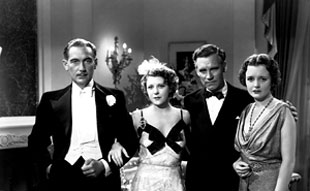
Paul Lukas, Chatterton, Walter Huston and Mary Astor on the set of DODSWORTH. (Note cellophane bow in Ruth’s hair; gowns by Omar Kiam)
Chatterton is only really remembered today for her best performance, in William Wyler’s brilliant DODSWORTH in 1936, a film containing scenes of intractable domestic strife that are a precursor of WHO’S AFRAID OF VIRGINIA WOOLF, for which she deserved the Oscar. Her Fran Dodsworth is selfish to a fault – both amoral and an annoying cock-tease – often despicable, but through it all, Chatterton makes her deeply human, with a kind of searing empathy which makes us all see a little Fran in ourselves, however unwillingly. In her skilful hands, the usual dilemma of such a premise – why the hell does Sam Dodsworth stay with this bitch? – disappears, such is the actress’ fecund allure, mitigating charm and momentarily contrite, convincing fits of remorse. Costumed by the brillant Omar Kiam, her clothes help tell her story, as she progresses from Midwestern aspirational cosmopolitan to full-blown Continental fashion victim, replete with startling blondined hair adorned with a chi-chi cellophane bow. Co-star Mary Astor, going through her own travails with the scandalous publication of her diary during a vicious child custody suit, observed that Chatterton instinctively identified with her desperate, aging character, and, deeply conflicted, fought Wyler throughout the filming, but ended up being great, “in spite of herself.” In a classic example of an actress being blind to the merits of her best work, a la Faye Dunaway and MOMMIE DEAREST, Chatterton refused to see the film, and, indeed, had initially refused the part when it was offered to her, as Fran was “an unpleasant person.” She’d felt so strongly about this that she had walked out of the Broadway play production of it before the last act. Producer Samuel Goldwyn started a campaign among journalists who wrote that she was the only actress who could do justice to the role. She was persuaded to sign a contract but walked off the set on the first day’s filming and had to be persuaded and then threatened before she returned.

Her devastating final scene of DODSWORTH

ANYBODY’S WOMAN (1930)
But, really, because of her, sometimes solely, no Chatterton film is dismissable. MADAME X (1929), even with its creaky, mic-paralyzed direction by Lionel Barrymore (and this was before he was crippled), remains a virtuosic display of juicy Chattertonian histrionics, the template for every mummy love film to follow. ANYBODY’S WOMAN (1930), the creation of that harmoniously feminist team, director Dorothy Arzner and screenwriter Zoe Akins, is delightfully raunchy, features her as a blowsy burlesque queen (chummy with a very funny Cecile Cunningham), who drunkenly wakes up married to an aristocratic lawyer (Clive Brook as his most drolly frozen-faced) and having to deal with life among the toffs.

In the outrageous THE CRASH (1932), she handles the Wall Street disaster in a very personal way, playing a greedy wife who ruins her husband (the inevitable Brent) with a fake stock tip, and decides she’d really rather live in Bermuda anyway, where she takes up with an Australian sheep rancher, and contemplates divorce.

The ultimate pure Chatterton vehicle has to be Michael Curtiz’s amazing FEMALE (1933), which has her playing an automobile tycoon, who carries on like Catherine the Great with every man she comes across, treating them like so much used Kleenex and giving new meaning to the Harry Warren-Al Dubin torch song, REMEMBER MY FORGOTTEN MAN.

Checking the seductive goods out before moving in for the kill in FEMALE
She turned down producer Sam Goldwyn’s offer to do STELLA DALLAS, refusing to play “a common woman,” and quit the movies in 1938, returning to the stage, where she acted, directed and also translated French plays. She toured the country in PYGMALION, PRIVATE LIVES, and her last Broadway appearance was a revival of IDIOT’S DELIGHT in 1951. In 1940, she appeared in LEAVE HER TO HEAVEN, which, although it would be a major success for Gene Tierney in its screen adaptation, died the death on Broadway after 15 performances at the Longacre Theater. She made her directorial debut, guiding her friend Kay Francis in actress Patsy Ruth Miller’s comedy WINDY HILL in 1945. She performed THE CONSTANT WIFE in London and also did television and her final acting appearance in that medium was as Gertrude to Maurice Evans’ Hamlet in a 1953 Hallmark Hall of Fame presentation.
“I am back in the theater after all the grueling years of work in Hollywood,” she said in 1939. “For pictures place a greater burden on a layer than any other medium. If anyone tells you Hollywood is not a terrific strainhe is talking through his hat. It is the hardest work I know.”

at the 1935 Air Derby she organized

Thompson Trophy being presented to Harold Neumann by Ruth and Fred Crawford, with Roscoe Turner at the 1935 Thompson Trophy Race in the air
A Renaissance woman, she was the first film actress to become a licensed pilot, flying her own monoplane cross-country, and also successfully authored four books, the first of which, the best-seller, HOMEWARD BORNE, was published in 1950. Inspired by Pax Lyttleton and her work with Jewish refugees from Nazi Germany, it was the story of a Vermont woman who adopts a child, a concentration camp survivor, and in it, Chatterton dealt with race prejudice, as in these words, uttered by Jake, a Jewish character:
“I’m not bitter, but of course I’m old. All Jews are old. They’re born old.” Jake’s mouth twisted in a derisive smile. “That’s why they’re so God-damned young – and hopeful and trusting! And that’s why they’re not trusted. Jews are loving and loyal. They’re loyal to their people, their families and their loves. But nobody else wants their loyalty -or their love! … That’s not bitterness, that’s the truth. They’re steadfast. God help them. And I am proud of that! Because without that quality they wouldn’t exist – any more than dinosaurs exist. And that’s the way the rest of the ‘Aryan’ world thinks of them – as dinosaurs…The funny part is, there are good Jews and bad Jews, dull Jews and amusing ones, honest ones and dishonest ones; but it doesn;t matter and it never will matter. To the world, we typify the one word ‘Jew,’ and the world has built – I guess – an insurmountable wall between the Jews and the non-Jews. And God help the poor devil who tries to straddle it.”
It was made into a Playhouse 90 film with LInda Darnell, Richard Kiley and Keith Andes. After the formation of the state of Israel in 1948, Chatterton was actively involved with committees to address the food shortage there, and, in 1951, received the “Woman of Achievement” award of the Federation of Jewish Women’s Organizations.


Gowned by Omar Kiam for DODSWORTH








